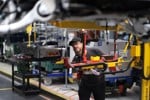Bent metal costs are the tip of the iceberg when it comes to resolving the true financial impact of road accidents.
In addition to the price of fixing the damage, everything from van downtime to lost contracts and third-party costs to employee injuries needs to be taken into account.
The total costs can be anything between four and 32 times the cost of the actual repair.
Consequently, the art of pro-actively managing an accident is crucial.
Fleets have four options: handle the process themselves in-house, pass responsibility to their insurer, use their leasing provider’s services (usually via through a third-party supplier) or outsource direct to an independent accident management company.
For larger fleets, the use of accident management providers or their leasing company are the preferred options as it cuts down admin.
The issue for most companies is that managing the accident is not seen as a core fleet function.
It requires resource and expertise.
However, if using an outsourced provider it is key for fleets to manage the supplier to ensure downtime is kept to a minimum and thresholds are set for authorisation of high value repairs.
Set the authorisation level too low and the fleet team will be contacted too frequently, which can be time consuming for a small team.
It would mean the fleet team effectively acting as the accident management provider itself, which could delay the start of the actual repair, increasing downtime.
Kevin Boxall, fleet manager at EDF Energy, says: “If the provider doesn’t receive authorisation from us within a certain time, then up to another level of value they can go ahead with the repair.
“We get slicker, they get slicker and our vehicles aren’t held up unnecessarily awaiting repair.”
Duncan Vernon, RoSPA’s road safety manager for England, believes robust accident management processes are essential – and they should consider the employee as well as the vehicle.
“From the perspective of the employer, there is always going to be a wide range of cost implications; for example, what happens if an employee can’t work for a period of time,” he says.
“It’s only when an organisation understands the problems that its drivers are going to face and then thinks through the procedures to manage these that an effective accident management policy can be implemented.”
At their simplest, these accident management policies control what happens in connection with the handling of the insurance claim, the repair procedure and replacement vehicles.

















Login to comment
Comments
No comments have been made yet.